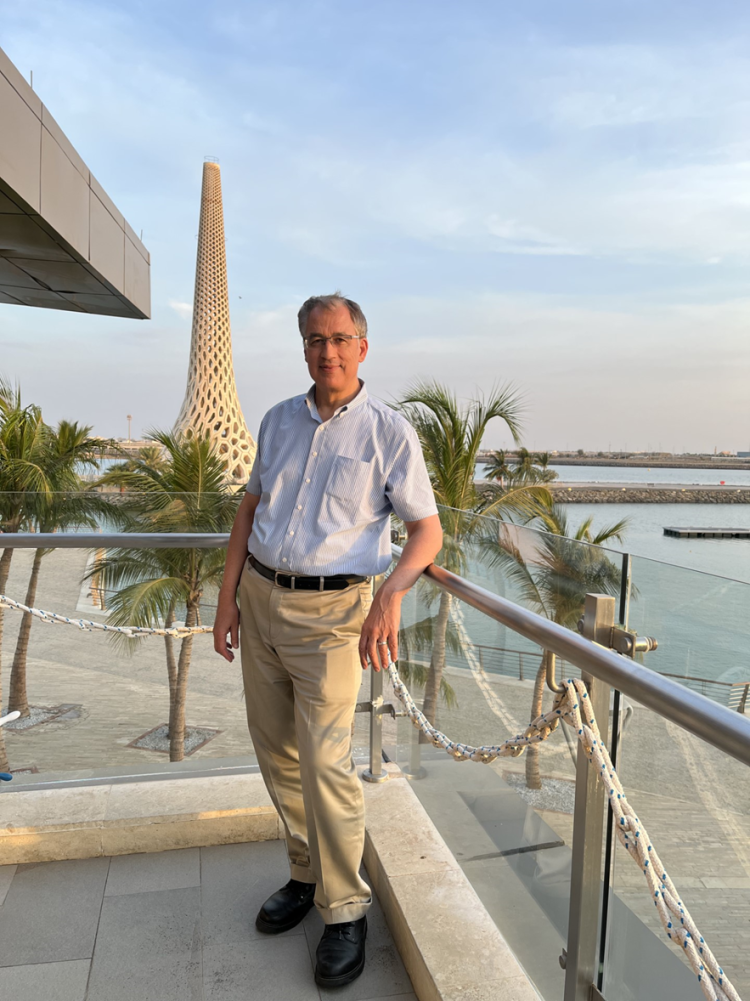
With growing concerns about climate change, a number of “smart” technologies have emerged to reduce energy consumption and decrease reliance on fossil fuels. While most engineers tend to focus on the technology, Moncef Krarti researches the acceptance of it.
“You need to adapt the technology to people’s needs,” said Krarti, a professor of civil, environmental and architectural engineering at the University of Colorado Boulder. “Otherwise, they won’t use it.”
Krarti recently received a Fulbright Global Scholar award to research these issues in Saudi Arabia and Australia — two distinct cultures with diverse climates and differing sustainability policies for buildings, he said. His research aims to understand the motivations behind whether individuals embrace smart technologies inside their homes, such as heating or air conditioning systems that automatically adjust the temperature inside and smart windows that adjust the tint based on solar heat levels.
Beginning this summer, Krarti will spend three months in Saudi Arabia, at host institutions King Abdullah University of Science and Technology (KAUST) in Thuwal and the University of King Abdulaziz in Jeddah, followed by another three months at the University of Western Australia in Perth.
Motivation and passion
Krarti’s passion for energy efficiency in the built environment traces back to his time as a PhD student at CU Boulder, where he pursued the building systems program, now known as architectural engineering. Following a postdoctoral position at Texas A&M University, he worked in the private sector in New York City, focusing on sustainable building practices.
His interest has since expanded from the application of solar energy to “energy productivity,” a microeconomics term which refers to the amount of energy required for people to be productive in their work and daily lives. He notes that people spend 80 percent of their time inside.
“If people are not comfortable within their indoor space, they are not productive,” he said.
In his private sector work, Krarti helped design buildings with advanced technologies and energy efficiency systems. But he discovered that energy consumption in buildings equipped with advanced technologies sometimes surpassed that of buildings without such systems.
“People will affect optimal operation of systems, such as by adjusting indoor temperature settings,” he said. “It’s not about how much technology is in the building; it’s how people utilize it.”
People’s preferences for their indoor environment vary across cultures. For instance, most Americans and Australians might be comfortable at 71 degrees Fahrenheit in their homes, while the average comfort level in Saudi Arabia is around 68 degrees, resulting in higher energy consumption, he said.
Two distinct cultures
Australia has set a target of achieving carbon neutrality in all buildings by 2050, while Saudi Arabia envisions renewable energy as the primary electricity source by 2030.
Saudi Arabia aims to reduce domestic fossil fuel consumption and allocate more for export, Krarti said. Air conditioning alone accounts for more than 65 percent of all electricity consumption in Saudi Arabia buildings, with some large homes requiring six to 10 AC units. This is leading to a growing interest in sustainable and smart city initiatives.
Due to more frequent heat waves, more Australian households are using air conditioning systems to maintain indoor comfort. However, Australia has adopted some of the most stringent energy efficiency standards in the world, as well as advanced technology to improve the energy efficiency of its buildings.
Besides comfort level, in some cultures there is resistance to smart technology due to cost. Given that energy is highly subsidized in Saudi Arabia, residents there are accustomed to inexpensive energy bills and are more resistant to costly energy-efficient systems, including smart technology, he said.
During his Fulbright Global Scholar fellowship, Krarti plans to evaluate the challenges facing countries such as Saudi Arabia and Australia in designing, retrofitting and operating a sustainable and resilient built environment. In particular, he plans to conduct energy assessments for different buildings through collaborations with host universities to train faculty and students. The assessments will evaluate building energy efficiency and gather residents’ feedback on new smart technologies through surveys. Krarti will also conduct demonstrations for advanced energy efficiency technologies such as smart thermostats and windows.
“There’s lots of complexity in designing and operating energy efficient buildings, but people were often left out,” he said. “What are the social and cultural elements of these smart buildings? How do we take into account these elements when we design and operate smart technology, which will be coming sooner or later?
“Can people be flexible? That may depend upon the culture.”




